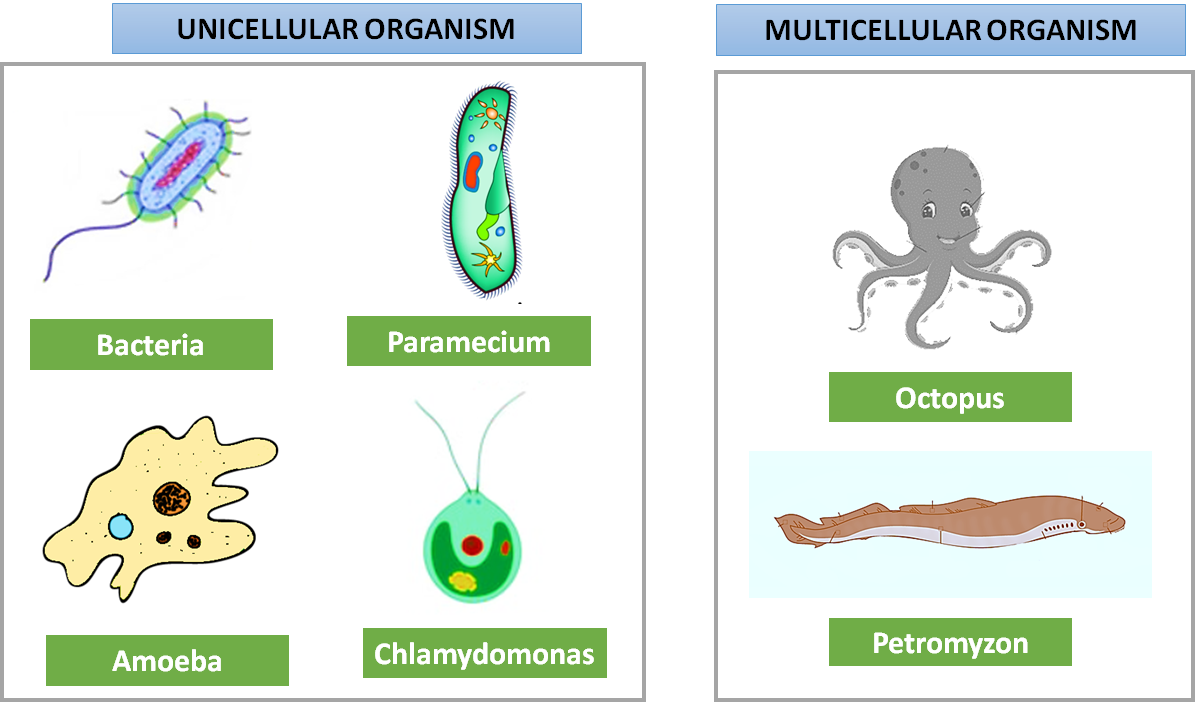| S.N | Unicellular organisms | Multicellular organisms |
| 1. | Made up of single cell. | Made up of several cells. |
| 2. | There is no division of labour. | There is division of labour. |
| 3. | Comparatively larger in size. | Smaller in size. |
| 4. | Unable to exhibit wide range of different functions. | More efficient and carries out a number of activities. |
| 5. | Do not contain membrane bound cell organelles. | Contain membrane bound cell organelles. |
| 6. | Life span is short comparatively. | Life span is long comparatively. |
| 7. | Easily susceptible to damage. | Have better adaptability capacity. |
| 8. | Any injury to cell can cause death of cell. | Death of few hundreds to thousands cells does not affect much. |
| 9. | Cell surface is responsible for various life processes like respiration, excretion, etc. | Separate systems are there to conduct various life processes. |
| 10. | Growth is due to growth in cell. | Growth is due to multiplication of cells. |
| 11. | Only visible under microscope. | Most are visible to naked eyes. |
| 12. | Binary fission is mode of asexual reproduction. | Mitosis is mode of asexual reproduction. |
| 13. | Conjugation is mode of sexual reproduction. | Production of gametes is responsible for sexual reproduction. |
| 14. | The cell body is exposed to environment on all sides. | Only outer cells are specialized to face the environment. |
| 15. | Power of division is not lost. | Power of division is lost in some specialized cells. |
| 16. | Prokaryotic in nature. | Eukaryotic in nature. |
| 17. | Have well-marked capacity of regeneration. | Capacity of regeneration decreases with increasing specialization. |
| 18. | Examples: Paramecium, Amoeba, Chlamydomonas, etc | Examples: animals and plants. |

Image source: vedantu
References:
i) https://pediaa.com/difference-between-unicellular-and-multicellular-organisms/
ii) https://askanydifference.com/difference-between-unicellular-and-multicellular-organism/

